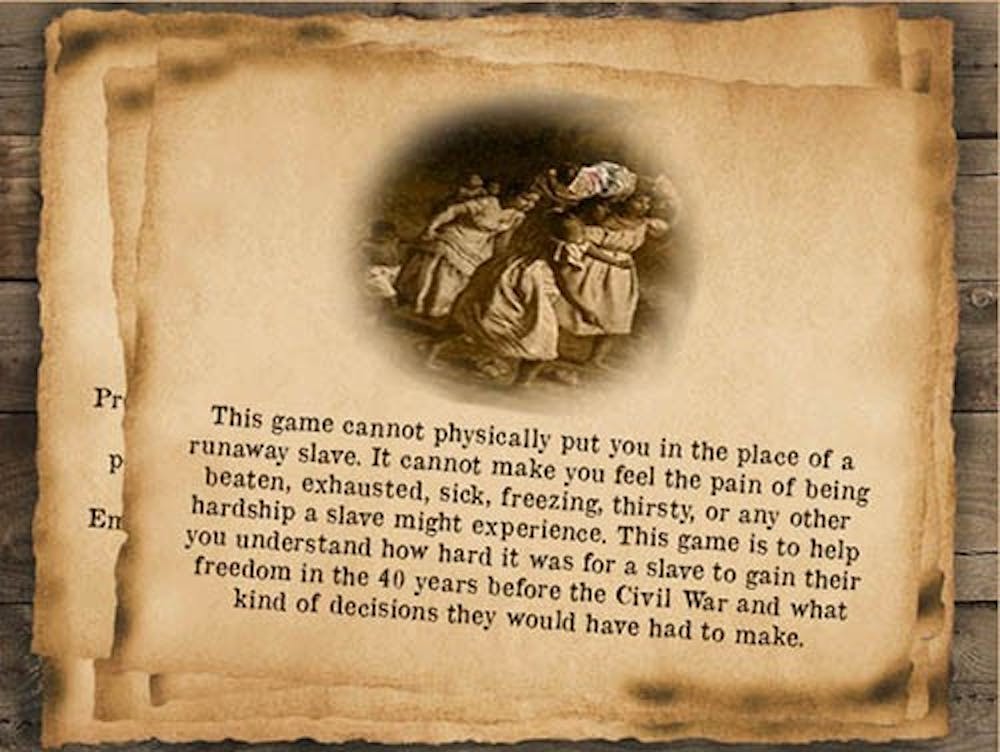Indiana fourth-graders can journey north evading slave catchers, dogs and dangerous rivers thanks to about 60 Ball State students.
The students released a computer game based on the Underground Railroad last month that they created during the Fall Semester as part of an immersive learning project.
Gloria Gaddie, a senior elementary education major, was part of the group that made the curriculum for the game.
“I think the whole game in itself is a success, and everybody was able to come together and put it together and get a finished project,” she said.
Gaddie isn’t the only one who said the game did well.
“We had another account from a teacher where, when the kids got to freedom, which is really tough to do, they were giving each other high fives that they had actually made it to safety,” said Ronald Morris, one of the producers for the project. “That’s why we started this, because we were trying to give teachers and kids different types of experiences.”
Morris, an elementary social studies professor, produced another game named Morgan’s Raid in 2011, which focused on Indiana’s role in the Civil War.
Morris said he believes immersive learning projects like these help students apply their knowledge and learn to work effectively with people outside of their majors.
“I think all of the people working on the project were able to grow and improve their skills by working together,” he said. “I think the students were really good about coming to understand what the strengths were.”
Steffan Byrne, a senior computer science major, received class credits for his part on the technical team.
“It’s more work than most people probably put into a typical three credit hour class,” he said. “It didn’t really feel like a class, since we had an actual client that we were making a product for. It felt more like a job.”
Byrne said he worked around 20 hours per week on the project.
He said one of the biggest problems was “people not understanding each other because we’re from different majors and we’re thinking about the problems in different ways.”
Every two weeks, the group had a voluntary meeting with Morris to check with the status of the project, which some didn’t attend.
“I feel like the people who didn’t go to those meetings didn’t get the positive reinforcement,” Byrne said. “They didn’t get to hear his input for the next cycle and what he wanted us to work on, so it had to be relayed by other members.”
Despite the differences the group had to overcome, Byrne said the game was a success.
“It’s historically accurate,” he said. “We have some good art in there, although it took a lot of effort to get it.”
Gaddie also said she enjoyed working on the project.
“Once you get so far along in your education, you don’t get to work with people in other departments,” she said. “It was great.”


